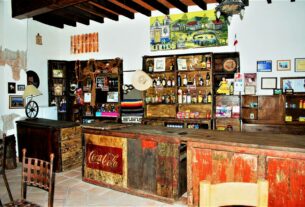It’s a very hot and muggy Saturday morning in this border town in Mexico. The company I am visiting is losing money and needs to turn things around quickly. A look at their budget model shows that there are two factors putting this company at risk. One is a very high scrap rate and the second is the very poor labour efficiency. This morning the plant manager and I are doing a walk through of the plant to look for the reason for the poor efficiency.
We stop and watch the highest volume assembly line in the plant. There are 15 employees assembling a very complex part. The budget model says there should be 12. The plant manager tells me that it is obvious that the budget model is wrong because we can see that all of the employees are very busy. As we stand and watch, the plant manager gets more and more agitated and continues to pressure me to go with him to talk to the general manager and help him convince the general manager that the selling price of the product must be increased. After watching for an hour I told him that he needed to explain to me the flow of the line. He struggled for a few minutes and then gave up.
One piece flow is a basic of lean manufacturing. It means that each part must be passed to the next operation only when that operation is ready for it and that buffer inventories must be eliminated or visually controlled. When one piece flow is not followed, the operators can pace themselves by drawing on inventory built up between the work stations and it is very difficult to see the inefficiencies.
I explained this concept to the plant manager and we had a quick meeting with the operators to explain that we wanted to try some changes that would make their jobs a little easier. We then worked our way along the line, work station by work station until we had the entire line using one piece flow. I then asked the plant manager to stand with me in the same spot and tell me what he saw. He told me that some of the operators were struggling to keep up and that others did not have enough to do. We then went and redistributed some of the work to better balance the load. As we continued to watch, more possibilities opened up and we continued to make changes. By the end of the morning, we had eliminated two operators from the process, increased the production rate and made the job easier for the operators. The plant manager was very excited and wanted to look at another line that afternoon.
We decided to go out and treat ourselves to a nice lunch and then return to the plant. To our dismay, when we returned, the line was right back where we started in the morning. The plant manager found the supervisor and asked him why they had changed back. He told the plant manager that it was obvious to him that the operators were not working hard enough under the new system and that if there was no inventory between the work stations then the operator was idle waiting for the parts. The plant manager started to shout at the supervisor but I stopped him and explained that the fault was ours, not the supervisor’s because we had failed to educate him on the new way of thinking and to make him a part of the change. We then spent the rest of the afternoon working with the supervisor on the same line and now had another convert. We were also able to eliminate an additional two operators.
Why focus on a labour savings in a low cost country where the labour cost is so low? First, waste is waste and should be eliminated in any form. The waste of human resources is probably the worst form of waste. When production flows, the work force is generally happier and scheduling is much easier. Secondly, we managed a 20% savings in labour on this particular line without any capital expense. This is important in a turnaround situation where money is usually tight. Lastly, the lower inventory on the line also means lower cost. The scrap rate on this line was also reduced without any other effort because the parts were not being subjected to handling damage and from being dropped on the floor. The ability to now meet the production schedule also meant that all shipments went out by regular freight, not at a premium expense.
The plant manager and supervisor learned to apply one piece flow and stand and watch, and also trained and mentored others in the plant to do the same.



